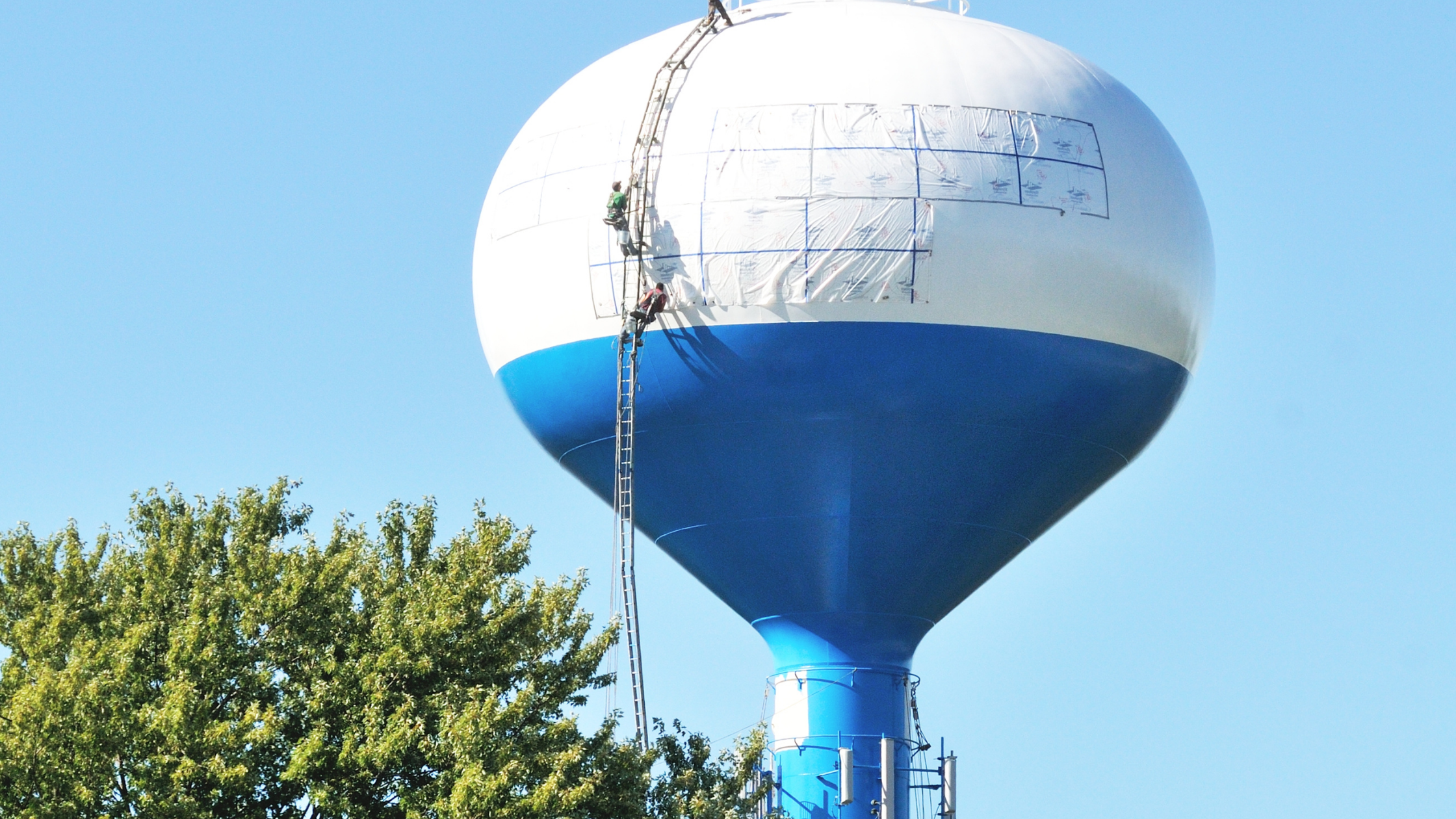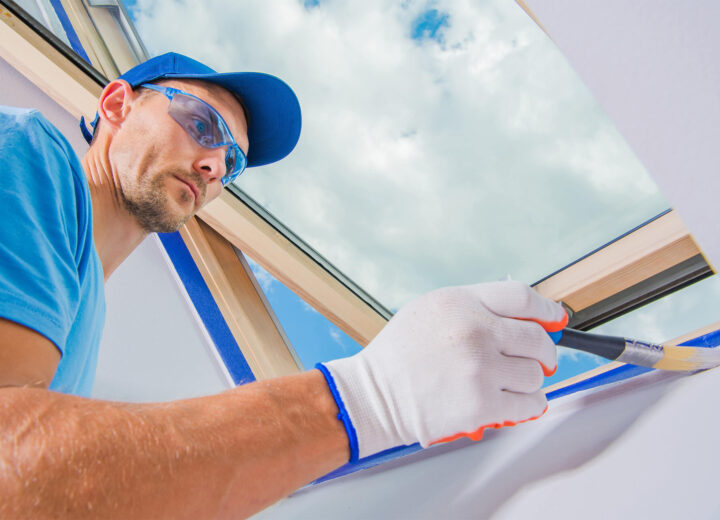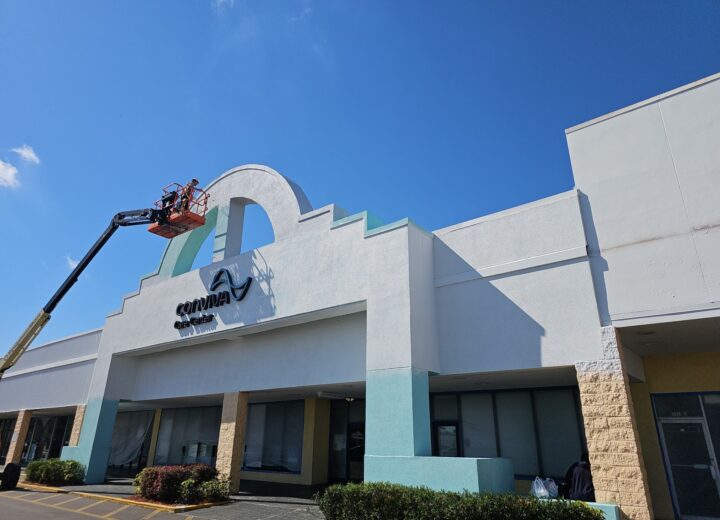 It was not long ago when water tank painting required tanks to be drained before work began. Condensation on the exterior made it impossible to paint a tank in service. Even quality coatings would fail due to the moisture.
It was not long ago when water tank painting required tanks to be drained before work began. Condensation on the exterior made it impossible to paint a tank in service. Even quality coatings would fail due to the moisture.
This was another reason water tank painting was typically confined to summer, even though summer weather leads to peak water demand in most communities. As discussed in a previous post, difficulty developing a coating that adhered well and cured quickly in winter was another big factor.
Cold-compatible coatings have arrived, greatly extending the active season for water tank painting.
But even in the midst of that great development, many painting professionals did not foresee any change in the requirement that tanks be drained. In fact, the coatings industry had to look far afield – at developments in bridge and highway construction – to find new ways to handle these age-old environmental challenges.
It might come as no surprise that Sherwin-Williams was at the forefront of this effort.
Sherwin-Williams Innovations Opened the Way to Water Tank Painting Without Draining
Coating industry enthusiasts already know that Sherwin-Williams has been a major force in expanding what was believed possible in commercial coating services. Only a few years ago, it developed and introduced the first-ever true microbicidal paint to reach the market, capable of destroying more than 99% of several pathogens.
Since then, the PaintShield product has become common in hospitals and senior care centers.
With a continued focus on innovation, the brand’s work in water tank painting has been impressive.
The secret was moisture-cured urethane. Urethane (also called polyurethane in some industries) is an organic polymer joined by carbamate links. It has become popular as a premium flooring solution for demanding industrial and commercial workplaces. However, it is also used in hundreds of other contexts.
Because of a wide variety of primers, intermediates, and topcoats, specific coating systems can be created for water tank painting under almost any conditions. This is the key to developing a tailored coating strategy that enables fast, efficient, and long-lasting performance after water tank painting.
Small and mid-sized water systems can suffer from severe strain during drainage, which could lead to a situation where the newly painted tanks do not operate as expected. By formulating your coatings correctly, expert painting contractors ensure you no longer need to take on this risk.
You’ll also save time and money. Streamlined coating application makes a project go faster.
That said, water tank painting is still a comprehensive process that must be handled carefully.
Ensuring Safe and Effective Water Tank Painting Means Planning Your Project in Detail
Whether you’re in charge of a small water system at a multifamily building or a large municipal system, no one wants to be a contractor’s first water tank painting job. Water tank painting comes with a variety of challenges. Both the contractor’s project manager and their painting team members need to understand the process well.
Some of the essential considerations include:
1. On-Site Inspection
An on-site inspection of your water system should precede the submission of any bids. Painters need to know about the specifics of your water tanks and the surrounding infrastructure, including capacity, pressure, pipe lengths and type, and materials in use. All these factors influence equipment, staffing, and coating selection.
2. Safety
Elevated water storage tanks present clear dangers of slip and fall. OSHA-approved rigging must be set up to support both your painting personnel and the equipment they need to use. Teams are best prepared when everyone on the project has undergone rigorous OSHA safety training. A simple oversight can prove to be disastrous.
3. Surface Preparation
The exterior surface of the water tank must be prepared correctly for coating. That may require that the surface be cleaned of corrosion and contaminants. Sand blasting, pressure washing, and other approved techniques are used to eliminate dirt, mold, mildew, bacteria, and any old coatings that need to be fully removed.
4. Project Timing
All in all, summer is a safer time for water tank painting than deep in the winter. Still, a team needs to plan for possible weather delays. Staffing should take into account the hottest times of day and ensure that no member of the crew will be subject to extreme temperatures for an unsafe period of time.
5. Choice of Coating
Painters should not assume that an off-the-shelf solution will always be ideal. Because there are so many moisture-cured urethane products now available, they often need to be combined for optimal results. The job doesn’t end with adherence – coating longevity must also be considered.
Water tank painting is safer than it used to be, and the potential for excellent, long-lasting results is far higher. To get there, however, expect rigorous project planning and communicate all you can about your expectations.
{{cta(‘9de02520-f11a-488c-8c31-5b289e42101b’)}}






